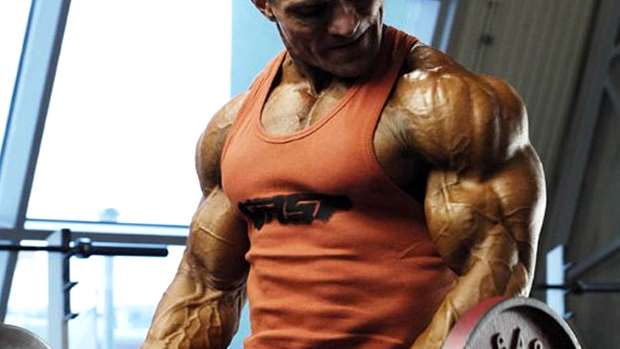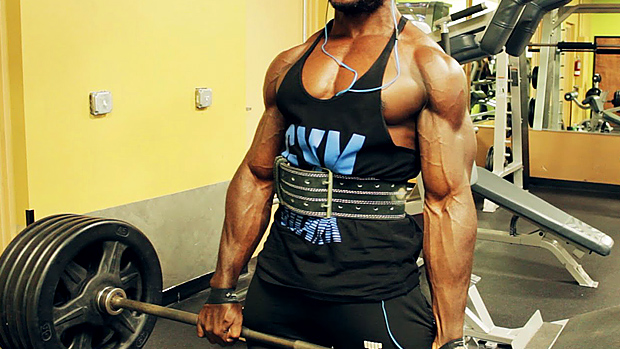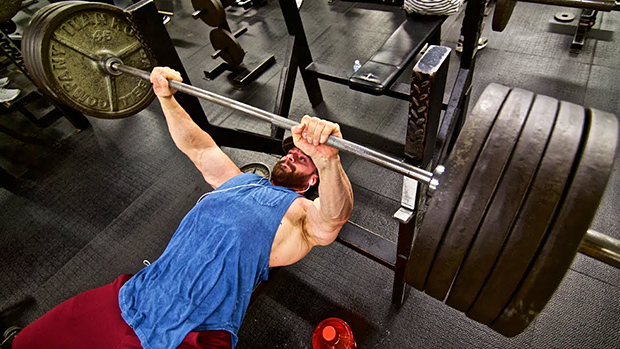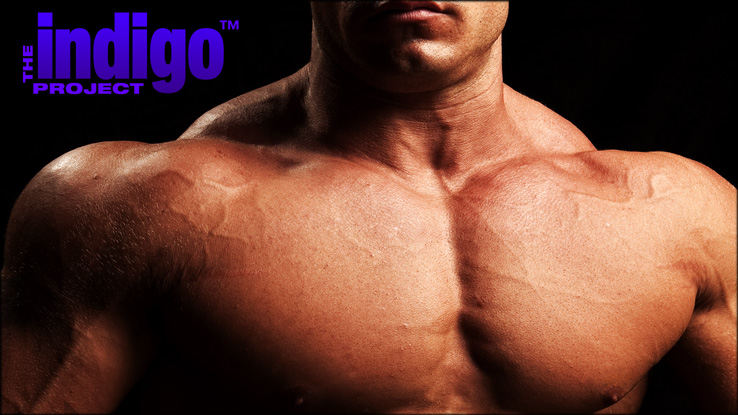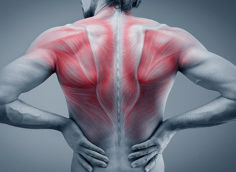When a coach is short of ideas and the blank page syndrome is
about to set in, there's always a bright light at the end of the
tunnel. A subject that's easy to write about and guaranteed to
please: arm training secrets!
However, since writing a "big guns" article is the easy way out
for most, there's very little left to be discussed, and few of
those articles give you anything new to spark growth in your
favorite limbs (okay, second favorite if you catch my
drift).
Bucking that trend, this article will present a very cool and
effective way to make those arms of yours muy grande:
the mechanical drop set.
The Mechanics
By now, most of you know what a drop set is. For those who were
either living in a cave or are just recovering from a painful
Pilates addiction, here is, in short, how they work.
Drop sets are basically a way to extend a set past the point
where you can't complete any more reps of an exercise. Normally, a
drop set consists of reducing the amount of weight on the bar to
allow the trainee to perform more reps.
For example, say you start with 80 pounds on the preacher curl
and bang out 8 reps. You'd then immediately reduce the weight by 10
to 20% (to 60 to 70 pounds), and without any rest, continue to
perform more reps.
This is a fairly straightforward technique, and yes, it's
incredibly effective when properly used.
The method that I'll present relies on the same basic principle,
which is to change an exercise parameter to continue the set.
However, with the mechanical drop set, instead of reducing the
load, you switch to a new, but similar exercise (by changing the
grip, angle, etc.).
Mechanical drop sets can be applied to all muscle groups, but
today we'll focus on the arm flexors (biceps, brachialis, and
brachioradialis).
Mechanical Drop Set #1: Bilateral to Unilateral Dumbbell
Curl
This technique is based on the general principle that you can
lift more weight when performing a movement unilaterally (one side
at a time). Reason being, the neural drive is focused on the one
active side, thus more high-threshold motor units can be
recruited.
When it comes to alternate dumbbell curls, there's also the fact
that the non-working arm can rest a few seconds after each rep,
allowing for partial recovery of ATP.
For this first option, start by doing seated dumbbell curls,
both arms at the same time. When you can't complete a full rep,
take two or three seconds of rest and continue the set by doing the
seated dumbbell curls alternatively (one arm at a time). When you
can't complete any more seated reps, stand up and continue with the
alternate curls.
For the standing curls, a slight cheating motion is
allowed, but no swinging – this isn't a lower back exercise!
The goal is to get around three or four more reps when you're
standing up. If you do more than that, you're either using too much
momentum or you didn't go hard enough on the first two parts of the
exercise.
So, the whole thing looks like this:
A1) Bilateral seated dumbbell curls for
6 to 8 reps
A2) Unilateral seated dumbbell curls for as many reps as you
can
A3) Unilateral standing dumbbell curls for as many reps as you
can
Mechanical Drop Set #2: Weak to Strong
Multi-Grip Dumbbell Curl
With this mechanical drop set, the
multi-grip method has the advantage of thoroughly stimulating all
of the arm flexor muscles (long and short head of the biceps,
brachialis, and brachoradialis).
You use three different curling grips,
starting with the weakest (reverse/pronated), moving on to the
second strongest (regular/supinated), and finishing up with the
strongest grip (hammer).
<!--  -->
-->
Because of the strength differences in
the grips, even if you reach a point where you can't complete
another rep with one grip, you'll be able to do more work when
switching to a stronger one.
Here's how you set up this multi-grip
curl:
A1) Dumbbell reverse curls for 6 to 8 reps
A2) Dumbbell curls for as many reps as you can
A3) Dumbbell hammer curls for as many reps as you can
Mechanical Drop Set #3: Strong to
Strongest Multi-Grip Dumbbell Curl
This is a variation of the preceding
method where you'll still use three different grips, but you drop
the weakest one (reverse) and add an even stronger grip at the end
(cross-body hammer).
By doing so, you'll place a greater
growth stimulus on the brachialis, which is perfect for giving the
arms a thick, three-dimensional look.
This second version of multi-grip curls
looks like this:
A1) Dumbbell curls for 6 to 8
reps
A2) Dumbbell hammer curls for as many reps as you
can
A3) Dumbbell cross-body hammer curls for as many reps as you
can
<!-- 
Dumbbell cross-body
hammer curl
-->
Mechanical Drop Set #4: Multi-Grip
Barbell Curl
Even though we're swapping out the
dumbbells for a barbell, this is somewhat similar to the preceding
two options in that the different movements allow you to completely
stimulate all of the main arm flexors.
The reverse barbell curl will greatly
activate the brachioradialis and brachialis, the drag curl
emphasizes the brachialis and outer portion of the biceps (long
head), and the standing barbell curl targets the whole
biceps.
Here's a set of multi-grip curls with a
barbell:
A1) Reverse barbell curls for 6 to 8 reps
A2) Drag curls for as many reps as you can
A3) Standing barbell curls for as many reps as you
can
Note: To perform a drag curl, as you
curl the weight up, keep your elbows tucked in to your sides, bring
your elbows back slightly, and keep the bar brushing against your
body during the whole movement.
<!-- 
Drag curl
-->
Mechanical Drop Set #5: Multi-Width
Preacher Curl
Grip width, and how it influences arm
flexor recruitment, comes into play with this last mechanical drop
set.
Specifically, the wider the grip is in
relation to the elbows, the more the focus is placed on the inner
portion (short head) of the biceps. As the grip gets closer (still
compared to the elbows), the long head, and eventually brachialis,
are brought into play more and more.
<!--  -->
-->
So, switching grip widths gives you
another way to completely annihilate your upper
arms.
A set of multi-width preacher curls is
done like so:
A1) Wide-grip/elbows-in preacher curls
for 6 to 8 reps
A2) Medium-grip preacher curls for as many reps as you
can
A3) Close-grip preacher curls for as many reps as you
can
Drop Sets, Add Inches
These are all powerful mechanical drop
sets that can be used to ignite new biceps growth. They allow you
to recruit more muscle fibers by increasing work output, as well as
maximally stimulating all three main arm flexors, ripping off the
door to new arm size.

